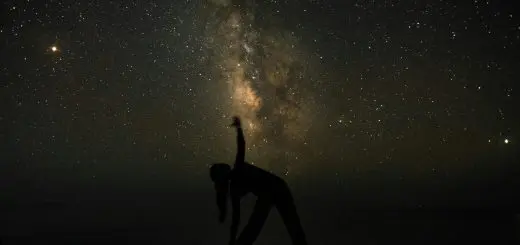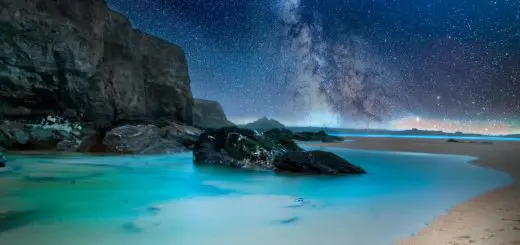The Great Bath of Mohenjo-Daro: Indus Valley’s Center

Looking for more amazing products? Check out our online store and explore our collection here! Happy shopping!
Before diving in, please note: This post is for informational purposes only. If you’d like to know more about how we approach topics, feel free to check out our friendly Disclaimer Page.
Hey there, amazing readers! 
We’re committed to delivering quality posts, and your support (even just sticking around despite the ads) means everything to us. So, bear with us, and thanks for helping us keep the good vibes rolling. Now, on to the fun stuff!
TRANSLATE BUTTON AT THE END OF THE ARTICLE
Introduction to The Great Bath of Mohenjo-Daro
The Great Bath of Mohenjo-Daro is a remarkable archaeological site located in present-day Pakistan, dating back to the ancient Indus Valley Civilization around 2500 BCE.
This ancient structure is one of the most well-preserved examples of early public bathing systems in the world, highlighting the advanced urban planning and engineering skills of its builders.
The Great Bath is not just a historical relic but a testament to the sophistication of an ancient civilization that flourished in the region thousands of years ago.
Discovery and Excavation of the Ancient Bath
The Great Bath was discovered during the excavations of Mohenjo-Daro in the 1920s by Sir John Marshall, who was the Director-General of the Archaeological Survey of India at the time.
The site was unearthed as part of a larger effort to uncover the remains of the Indus Valley Civilization, which was one of the world’s earliest urban societies.
The discovery of the Great Bath shed light on the social and cultural practices of this ancient civilization, providing valuable insights into their way of life.
Architecture and Design of the Great Bath
The Great Bath of Mohenjo-Daro is a large, rectangular tank constructed with finely fitted bricks and coated with a thick layer of bitumen to prevent leakage.
The tank measures approximately 12 meters by 7 meters and is surrounded by a veranda with rooms on three sides.
A staircase on one side allowed bathers to descend into the water.
The precision of the brickwork and the overall layout of the structure indicate a high level of architectural skill and planning.
Purpose and Significance of the Bath
The exact purpose of the Great Bath remains a topic of debate among historians and archaeologists.
Some believe it served as a public bathing area for ritual purification, while others suggest it may have been used for religious ceremonies or even as a swimming pool for the elite.
Regardless of its specific function, the Great Bath likely held great cultural and social significance for the inhabitants of Mohenjo-Daro, serving as a communal gathering place and a symbol of the civilization’s prosperity.
Water Supply and Drainage System
One of the most impressive features of the Great Bath is its advanced water supply and drainage system.
The tank was fed by a series of interconnected channels that brought water from an adjacent well or reservoir.
The water was then drained out through perforated clay pipes embedded in the walls of the tank, ensuring a constant flow of fresh water.
This sophisticated hydraulic system demonstrates the engineering prowess of the Indus Valley Civilization.
Rituals and Ceremonies at the Bath
The Great Bath is believed to have played a central role in the religious and ceremonial life of the ancient inhabitants of Mohenjo-Daro.
Archaeological evidence suggests that the bath may have been used for purification rituals or worship practices, with priests or other religious figures leading ceremonies in and around the structure.
The serene and meticulously designed environment of the bath would have provided a fitting setting for spiritual contemplation and communal gatherings.
Preservation Efforts and Challenges
Preserving the Great Bath of Mohenjo-Daro has been a challenging task due to its age and exposure to the elements.
Efforts to protect the site from environmental damage, vandalism, and looting have been ongoing, with various conservation projects initiated to safeguard this important historical landmark.
Despite these preservation efforts, the Great Bath remains vulnerable to deterioration, highlighting the ongoing need for sustainable conservation practices.
Comparison with Other Ancient Baths
The Great Bath of Mohenjo-Daro stands out among ancient bathing structures for its unique design and historical significance.
While it shares some similarities with other ancient baths, such as the Roman baths or the baths of ancient Greece, the Great Bath’s distinct architectural style and purpose set it apart.
The emphasis on communal bathing and ritual purification in the context of the Indus Valley Civilization gives the Great Bath a special place in the history of public bathing practices.
Symbolism and Cultural Importance
The Great Bath of Mohenjo-Daro symbolizes more than just a functional structure; it represents the cultural and social values of an ancient civilization.
The meticulous construction and alignment of the bath suggest a reverence for order and harmony, reflecting the spiritual beliefs and worldview of the people who built it.
The structure’s enduring presence in the archaeological landscape serves as a reminder of the achievements and legacy of the Indus Valley Civilization.
Tourist Attractions and Visitors
The Great Bath of Mohenjo-Daro is a popular tourist attraction and a significant heritage site, drawing visitors from around the world to marvel at its ancient splendor.
Tourists and history enthusiasts alike flock to the site to explore the well-preserved ruins of the bath and gain insights into the daily life and customs of the Indus Valley Civilization.
The Great Bath’s historical and cultural importance continues to resonate with visitors seeking to connect with the past.
Controversies Surrounding the Great Bath
Despite its historical significance, the Great Bath of Mohenjo-Daro has not been without controversy.
Some scholars have debated the exact purpose of the bath and its role in ancient society, leading to conflicting theories about its function.
Additionally, issues related to conservation and management of the site have sparked debates about the best practices for preserving this invaluable archaeological treasure.
These controversies underscore the ongoing challenges of studying and protecting ancient monuments.
Future Research and Discoveries
As technology and archaeological methods continue to advance, there is hope for new discoveries and insights into the Great Bath of Mohenjo-Daro.
Future research efforts may shed light on its construction techniques, water management systems, and cultural significance, providing a more comprehensive understanding of this ancient structure.
By combining traditional excavation with modern scientific techniques, archaeologists can uncover hidden secrets and unravel the mysteries surrounding the Great Bath, offering a glimpse into the past for generations to come.
Conclusion
The Great Bath of Mohenjo-Daro stands as a testament to the ingenuity and creativity of the ancient Indus Valley Civilization.
Its advanced architecture, sophisticated water systems, and cultural significance make it a key site for understanding the complexities of this ancient society.
Despite the challenges of preservation and interpretation, the Great Bath continues to fascinate researchers and visitors alike, offering a window into the rich history and heritage of the region.
As efforts to study and protect the site progress, new revelations about the Great Bath are sure to deepen our appreciation for this remarkable archaeological treasure.

The Enlightenment Journey is a remarkable collection of writings authored by a distinguished group of experts in the fields of spirituality, new age, and esoteric knowledge.
This anthology features a diverse assembly of well-experienced authors who bring their profound insights and credible perspectives to the forefront.
Each contributor possesses a wealth of knowledge and wisdom, making them authorities in their respective domains.
Together, they offer readers a transformative journey into the realms of spiritual growth, self-discovery, and esoteric enlightenment.
The Enlightenment Journey is a testament to the collective expertise of these luminaries, providing readers with a rich tapestry of ideas and information to illuminate their spiritual path.
Our Diverse Expertise
While our primary focus is on spirituality and esotericism, we are equally passionate about exploring a wide range of other topics and niches 

To ensure we provide the most accurate and valuable insights, we collaborate with trusted experts in their respective domains 
Our blog originally focused on spirituality and metaphysics, but we’ve since expanded to cover a wide range of niches. Don’t worry—we continue to publish a lot of articles on spirituality! Frequently visit our blog to explore our diverse content and stay tuned for more insightful reads.
Hey there, amazing reader! 
Check out our store here and take a peek at some of our featured products below! Thanks for being awesome!










